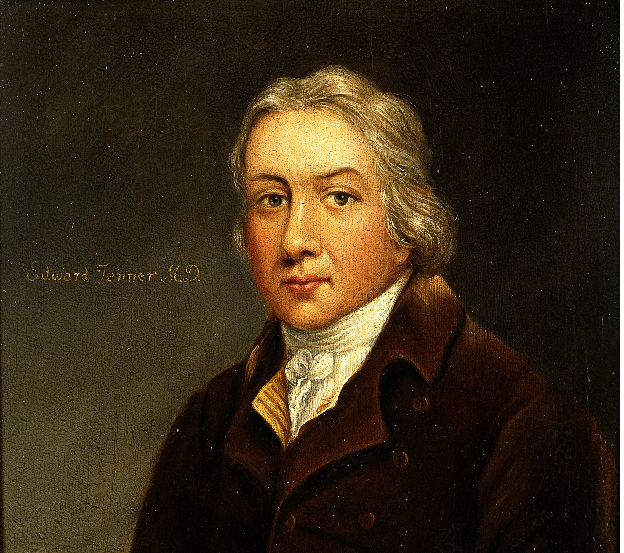Edward Jenner was the pioneer of the dreaded smallpox vaccination and also the father of immunology. Jenner, an English physician in 1798 successfully vaccinated a boy named James Phipps against smallpox (caused by variola virus). Smallpox was a disease that reached an epidemic level in the 17th-18th century, and the disease negatively impacted humanity causing high rates of morbidity and mortality as at the time. Smallpox was at the time treated by a Chinese practice called variolation -which involved the direct injection of smallpox fluid from an infected person into the body of a healthy person as a way of building immunity against the disease in the recipient host.
However, Jenner came up with vaccination or immunization, which was a modification of variolation, and involved the injection of cowpox fluid from infected cows into the body of humans. Though he could not explain the actual cause of the disease, he was honoured in the same year when he developed immunization for smallpox, a disease that is characterized by the production of small lesions called pox or pokes on the skin of the sufferer. Jenner had earlier observed that milkmaids exposed to cowpox never developed the serious smallpox and he thus hypothesized that exposure to cowpox led to protection against smallpox.
Variolation, which is immunization against smallpox, was a common practice before vaccination was common as at the time, and this worked because the patient was exposed to a weak strain of smallpox, which did not kill, yet conferred immunity on the host against the disease. Edward Jenner discovered that cowpox could protect against smallpox, with a much lower incidence of complications than variolation.
His discovery that a less pathogenic agent could confer protection against a more pathogenic one was indeed remarkable, and his works ushered in the modern era of vaccines and immunization, which is a preventive medicine. Jenner is widely known around the world for his innovative contributions in immunization and the total eradication of smallpox. Mankind does not need to worry about smallpox any longer, a disease that devastated humanity for centuries. His work paved way for the rapid development of vaccine and the scientific field called vaccinology, which today has helped to proffer vaccine candidates for the effective fight of a wide variety of infectious diseases.
Pasteur discovered a general method for immunizing people against disease while working on chicken cholera, and he coined the term vaccination to describe this technique. Pasteur’s technique of weakening a strain by a damaging treatment or passing it through a susceptible host was termed “attenuation” and this resulted in the creation of vaccines against anthrax, rabies and other microbial diseases. Many vaccines have been developed over the years and children today receive a number of shots after birth, a practice which is greatly decreasing infant mortality.
References
Barrett J.T (1998). Microbiology and Immunology Concepts. Philadelphia, PA: Lippincott-Raven Publishers. USA.
Beck R.W (2000). A chronology of microbiology in historical context. Washington, D.C.: ASM Press.
Brooks G.F., Butel J.S and Morse S.A (2004). Medical Microbiology, 23rd edition. McGraw Hill Publishers. USA. Pp. 248-260.
Chung K.T, Stevens Jr., S.E and Ferris D.H (1995). A chronology of events and pioneers of microbiology. SIM News, 45(1):3–13.
Salyers A.A and Whitt D.D (2001). Microbiology: diversity, disease, and the environment. Fitzgerald Science Press Inc. Maryland, USA.
Slonczewski J.L, Foster J.W and Gillen K.M (2011). Microbiology: An Evolving Science. Second edition. W.W. Norton and Company, Inc, New York, USA.
Summers W.C (2000). History of microbiology. In Encyclopedia of microbiology, vol. 2, J. Lederberg, editor, 677–97. San Diego: Academic Press.
Talaro, Kathleen P (2005). Foundations in Microbiology. 5th edition. McGraw-Hill Companies Inc., New York, USA.
Wainwright M (2003). An Alternative View of the Early History of Microbiology. Advances in applied microbiology. Advances in Applied Microbiology, 52:333–355.
Willey J.M, Sherwood L.M and Woolverton C.J (2008). Harley and Klein’s Microbiology. 7th ed. McGraw-Hill Higher Education, USA.
Discover more from #1 Microbiology Resource Hub
Subscribe to get the latest posts to your email.



